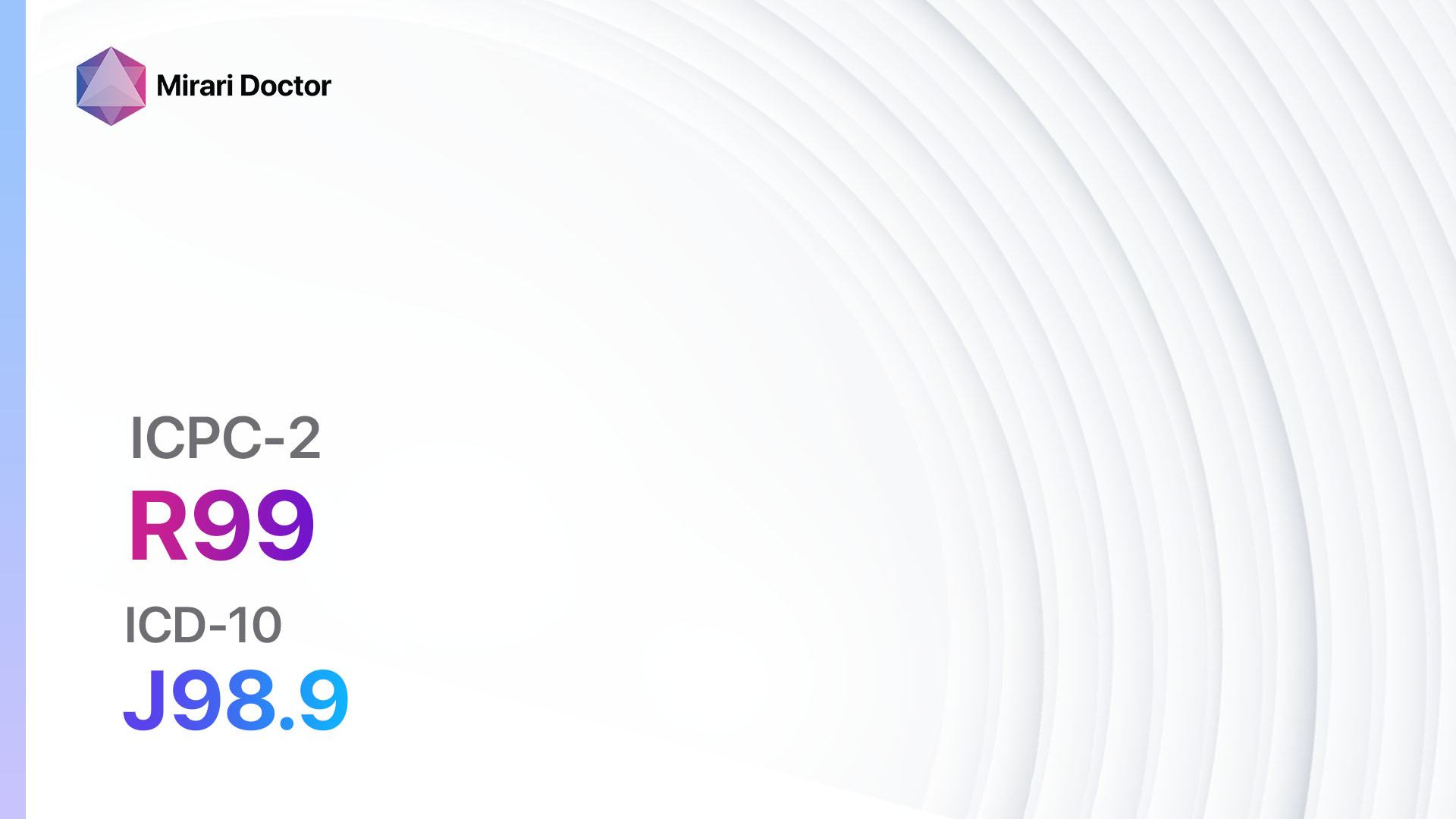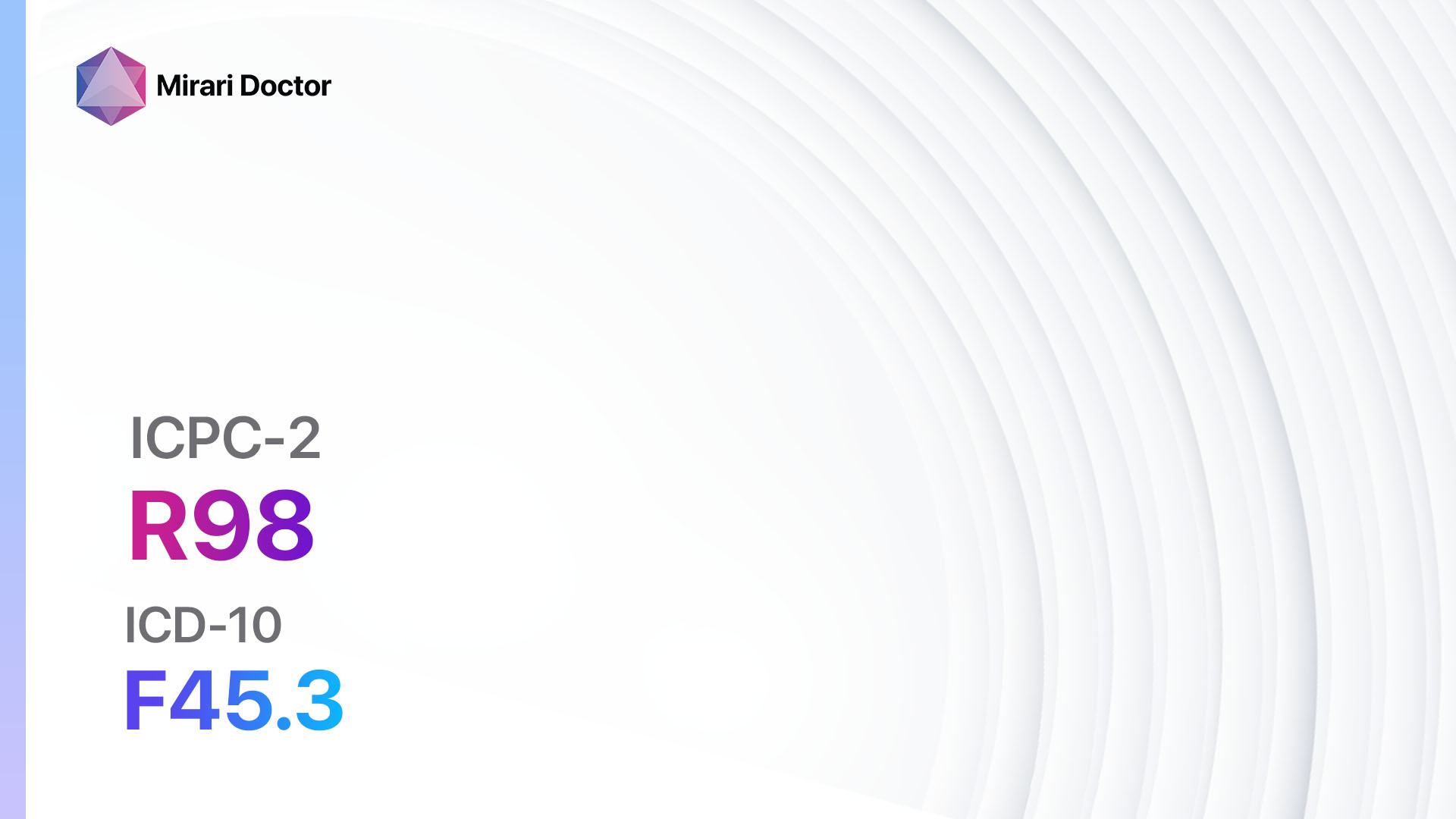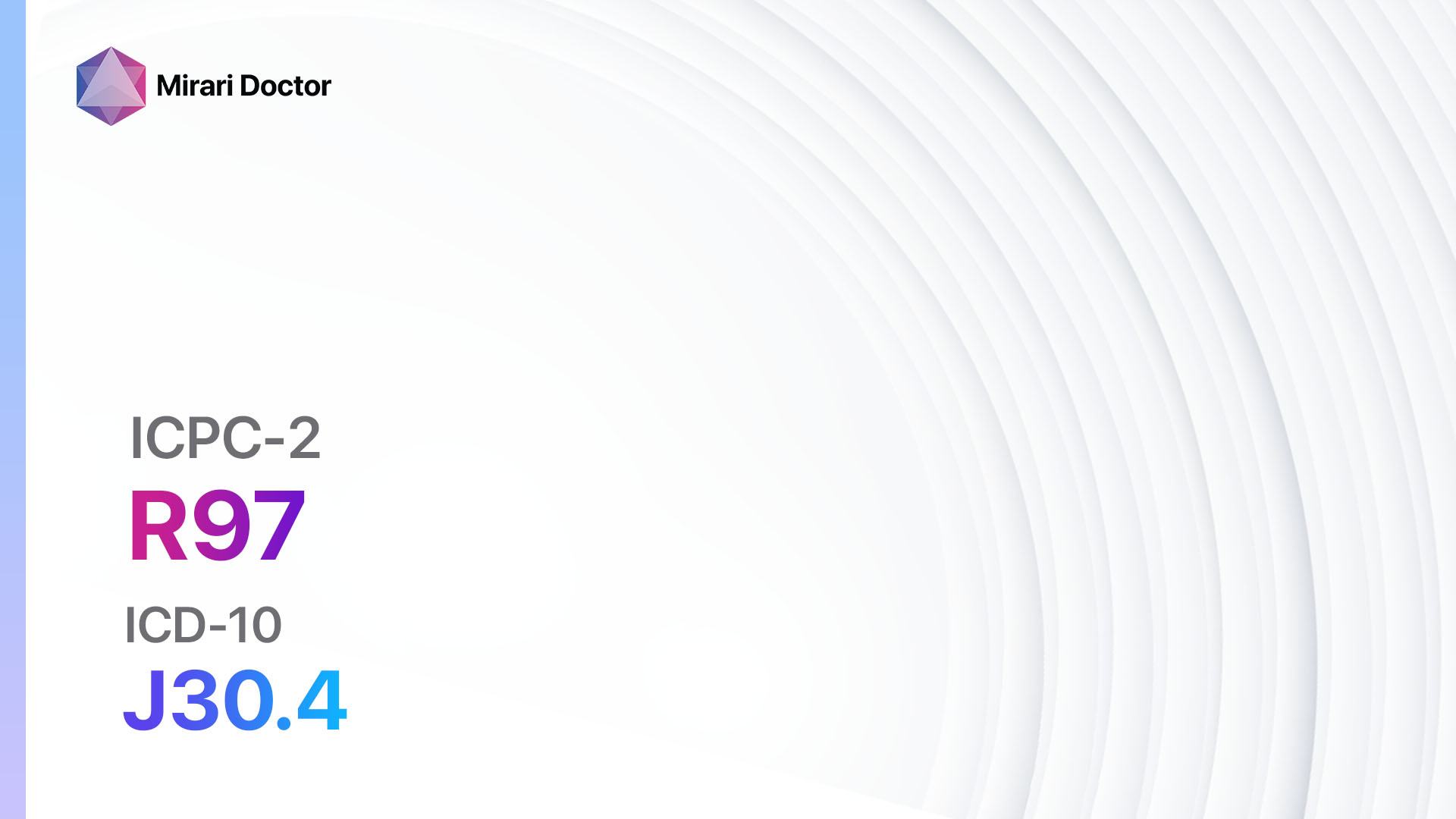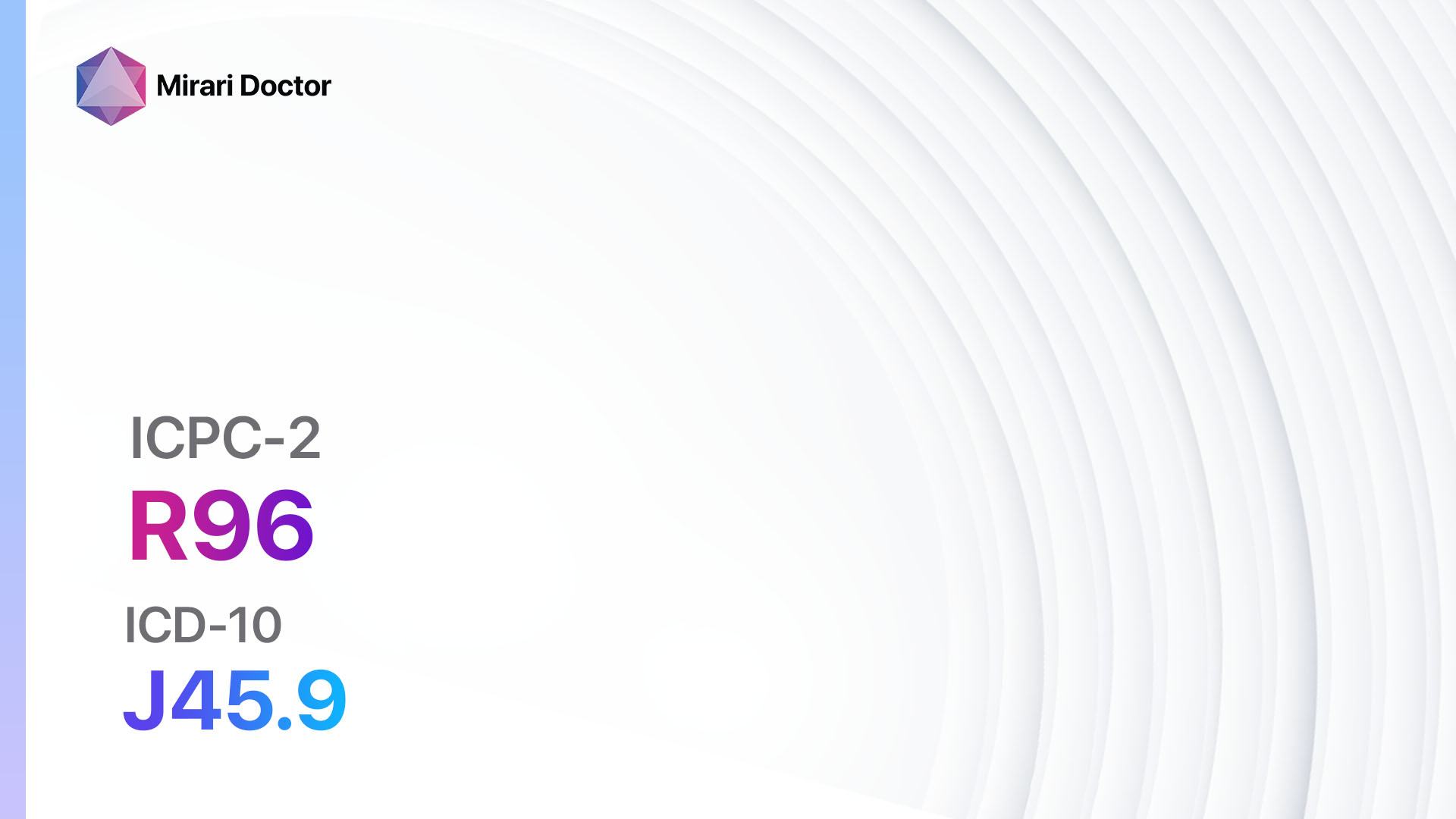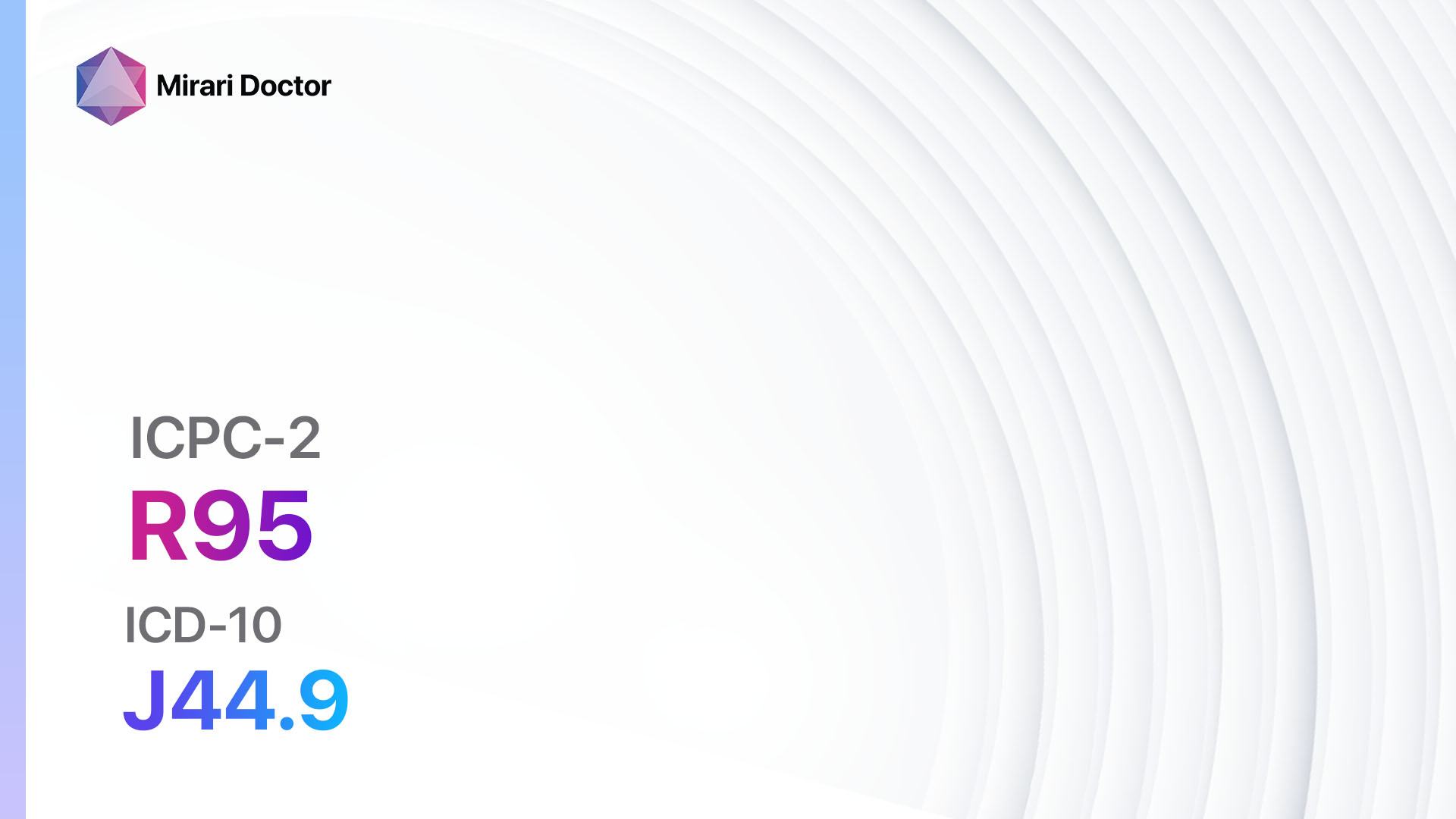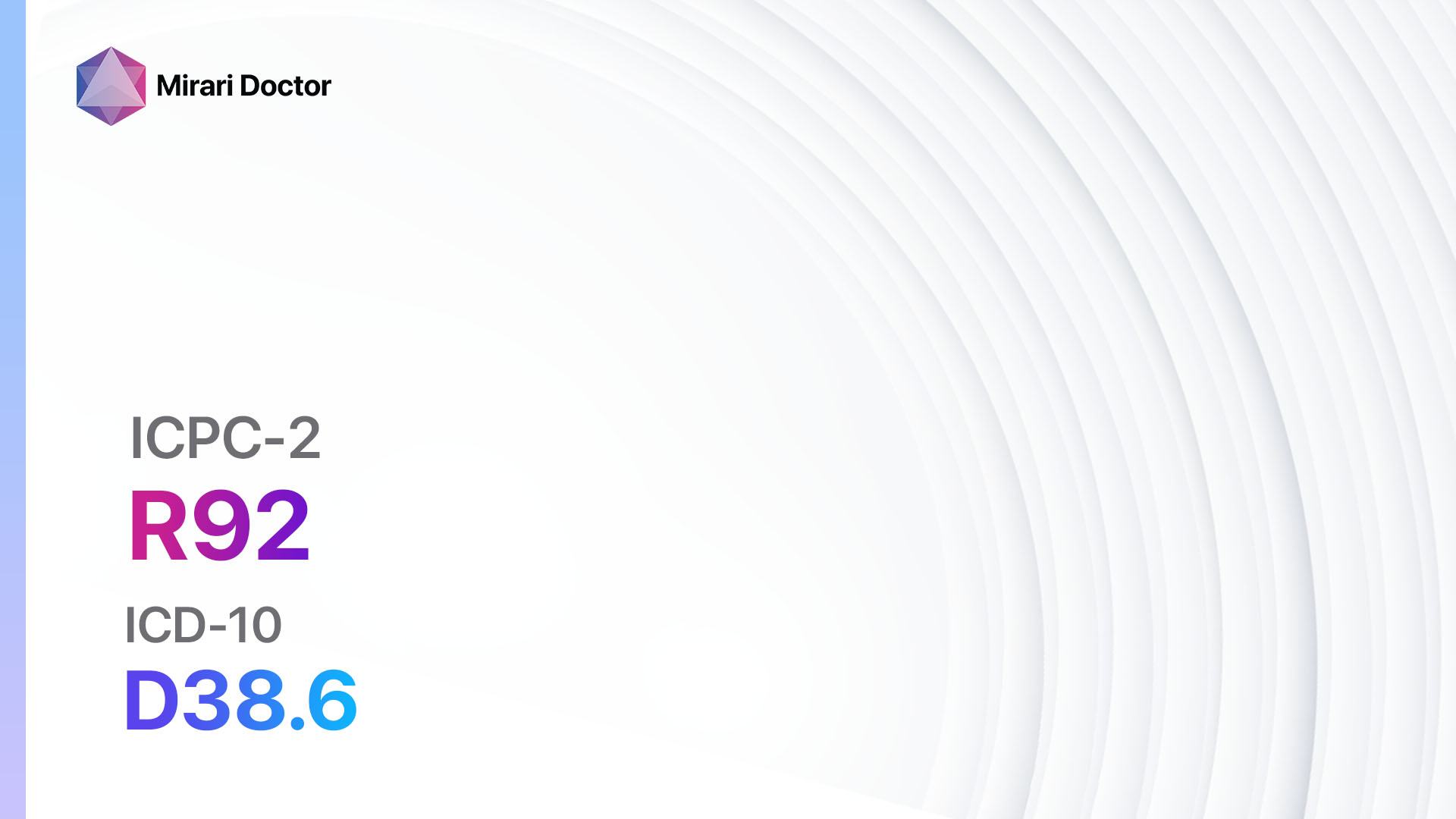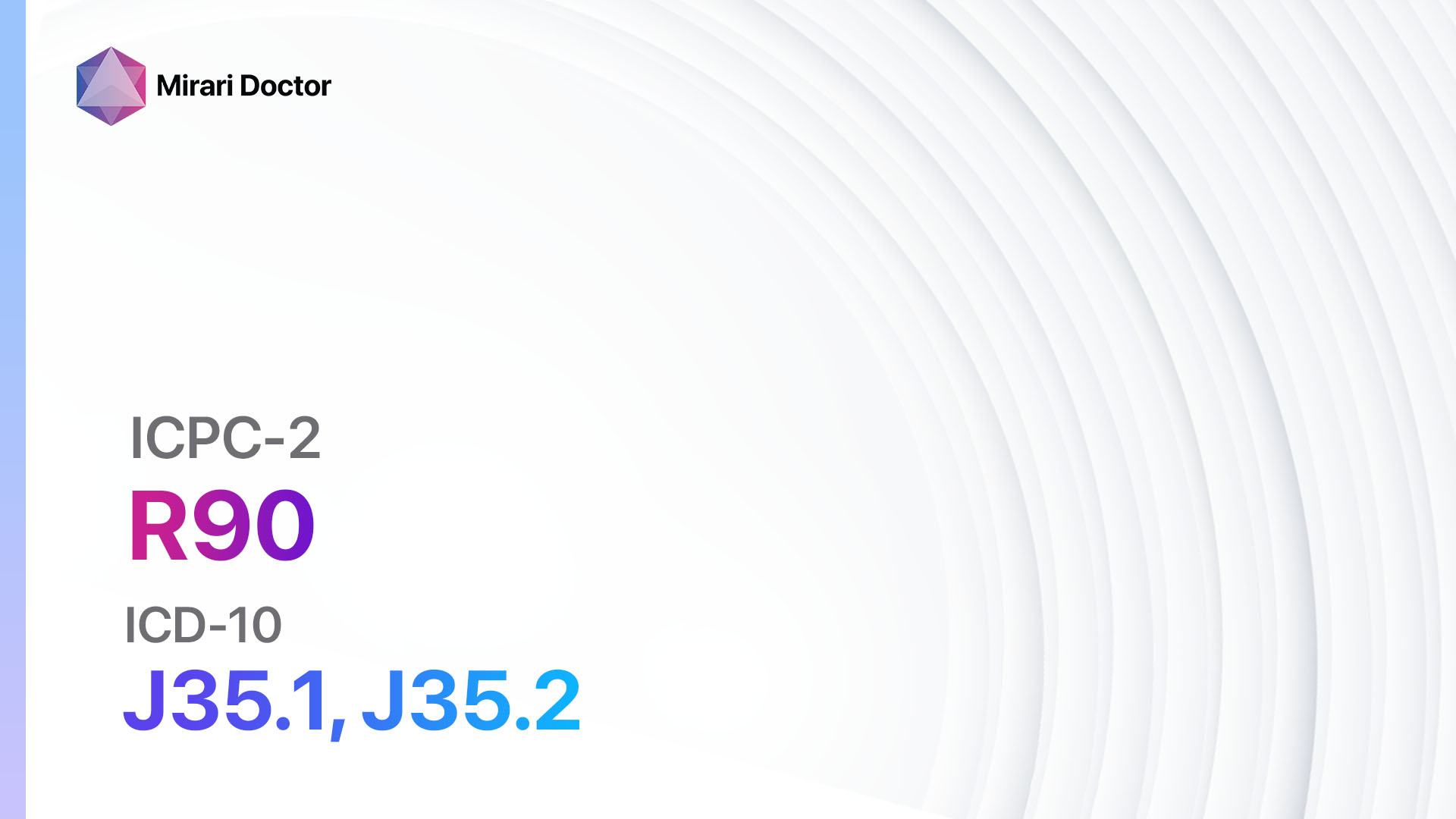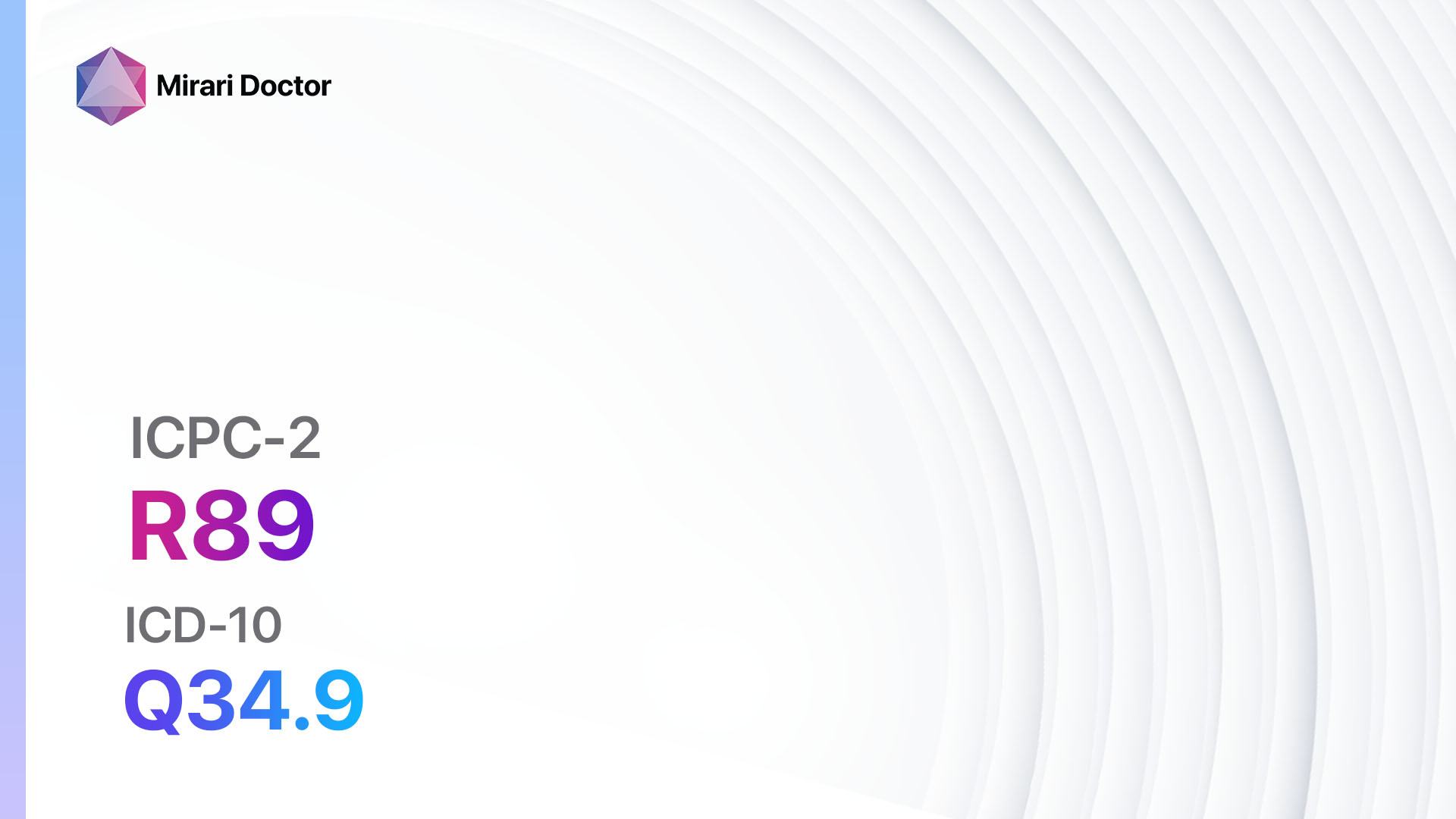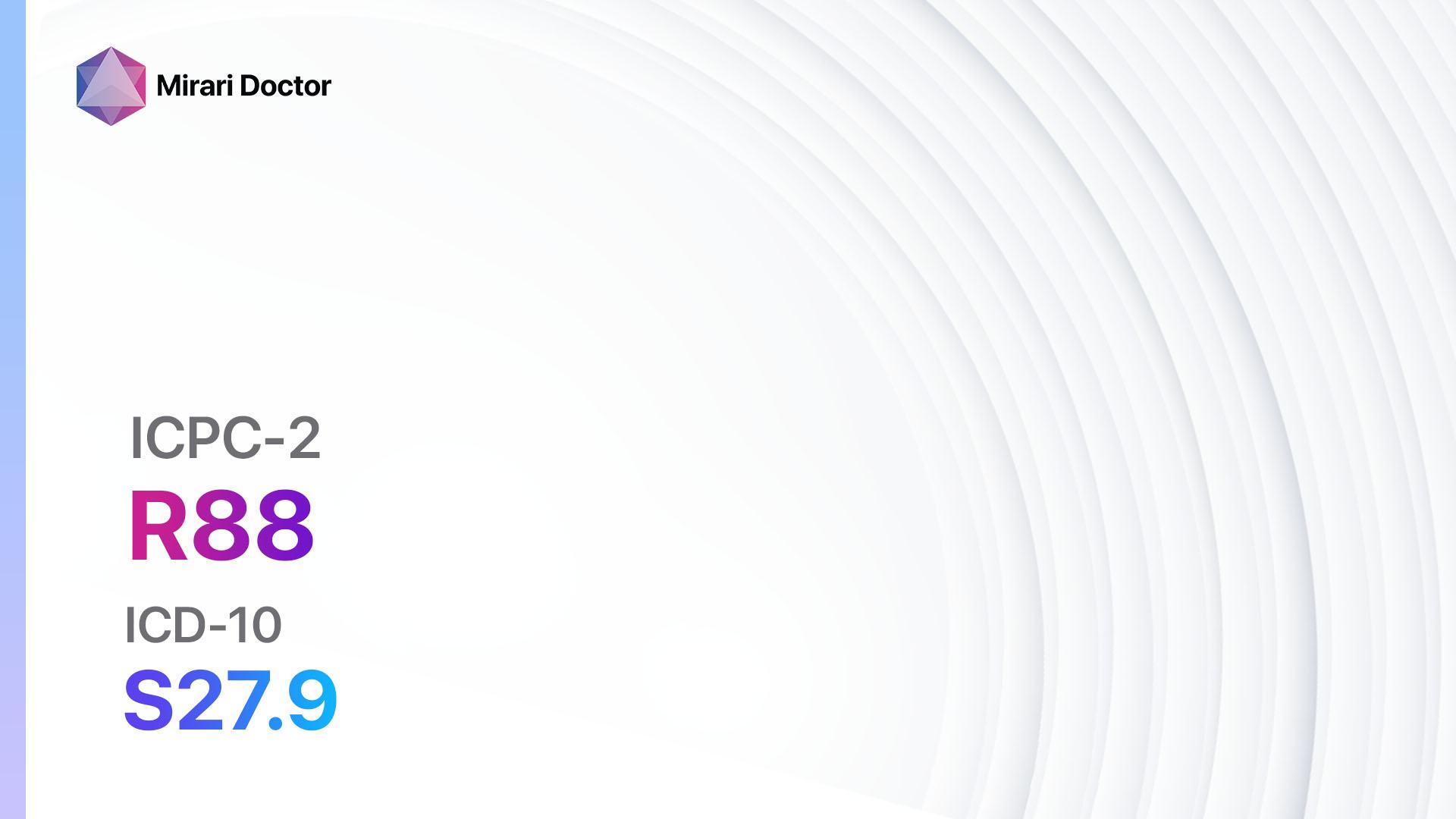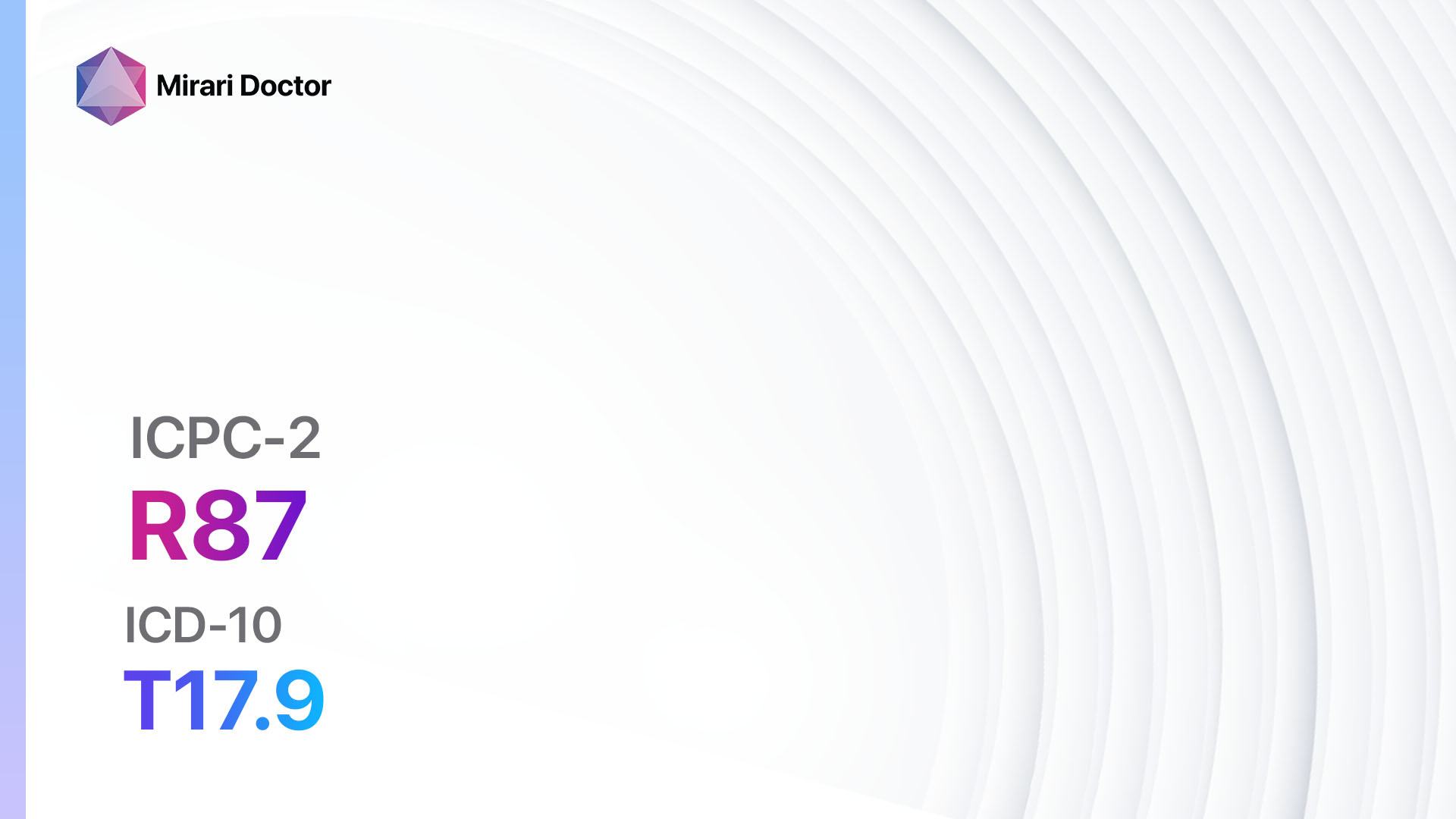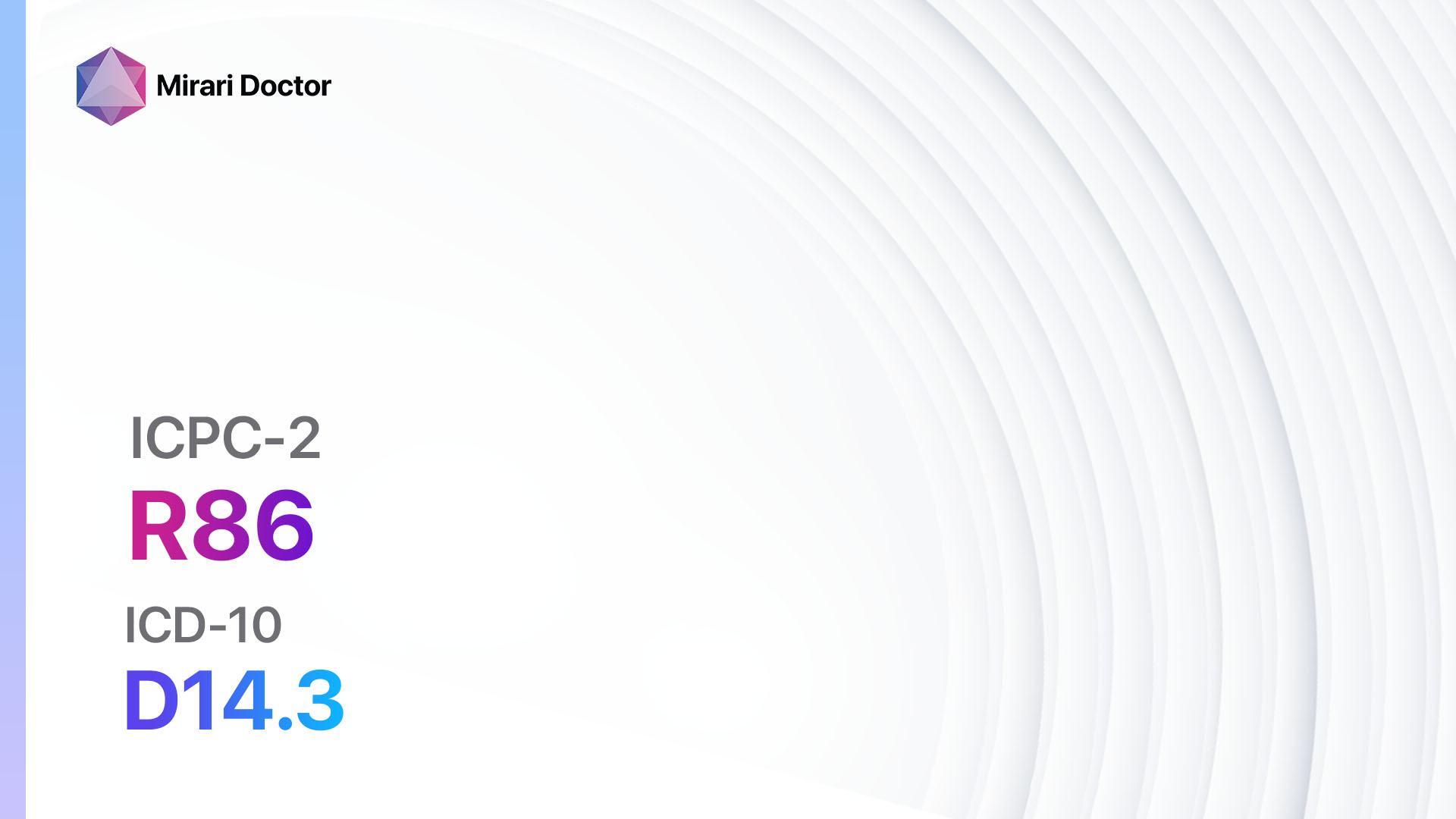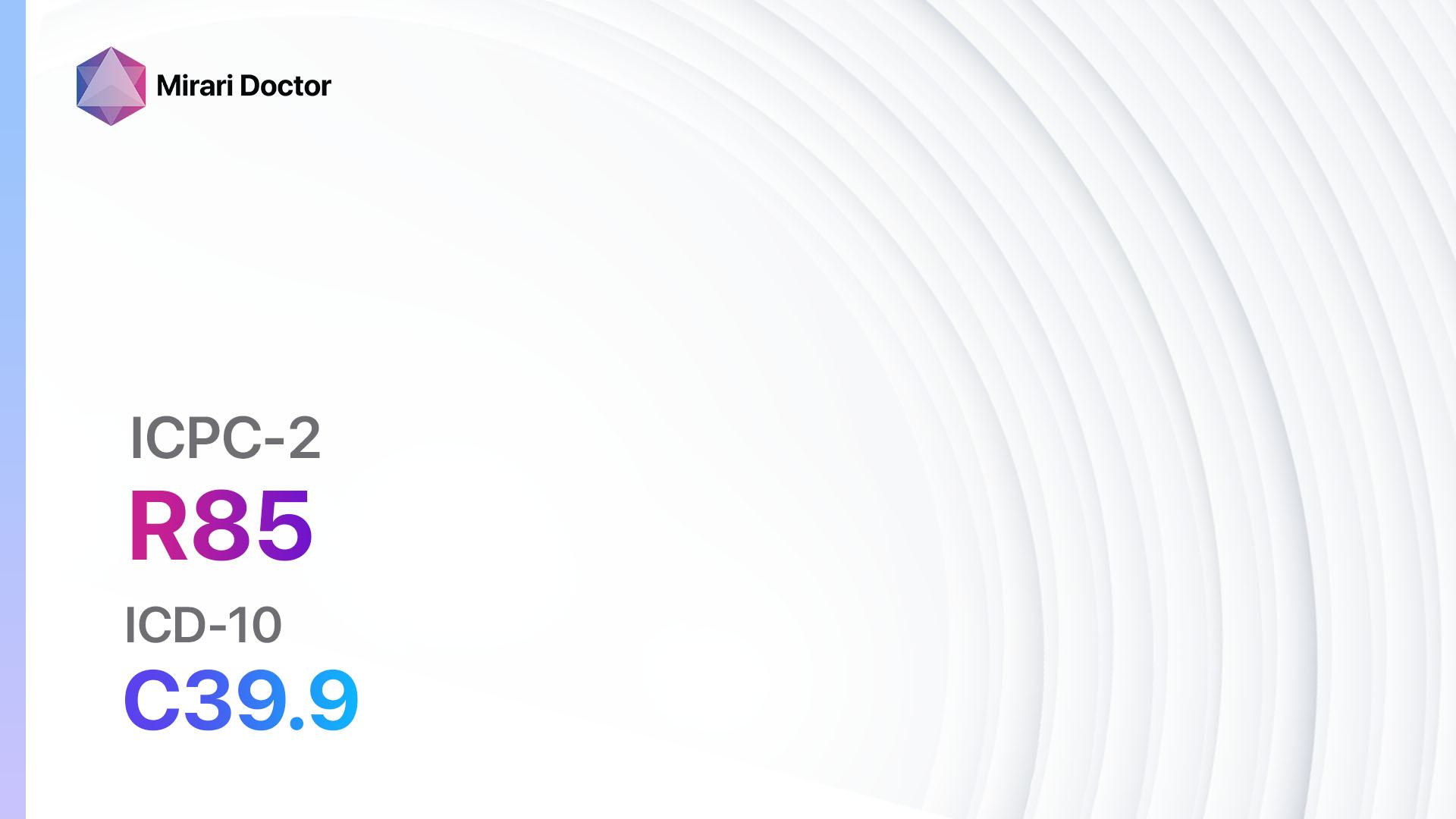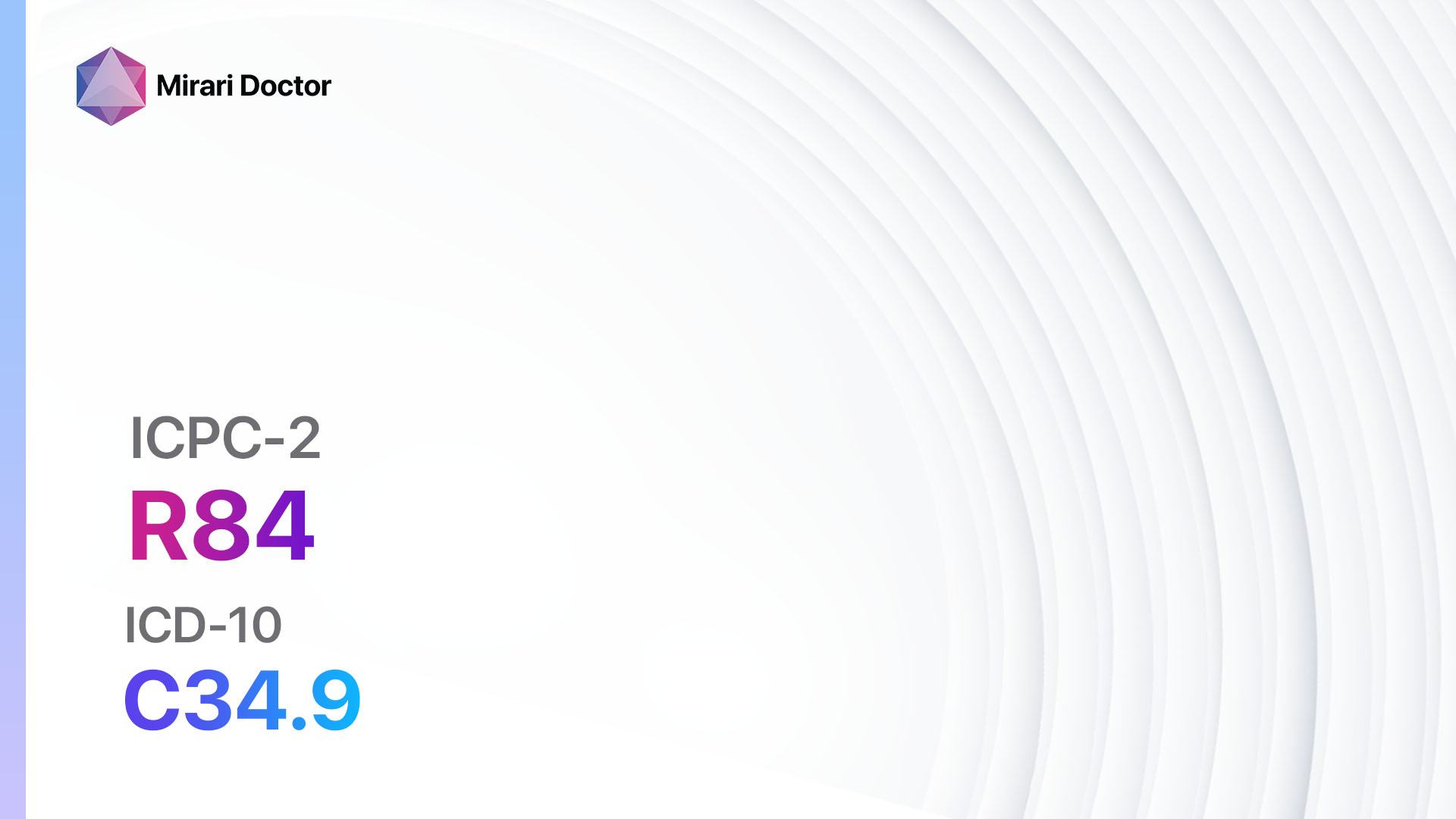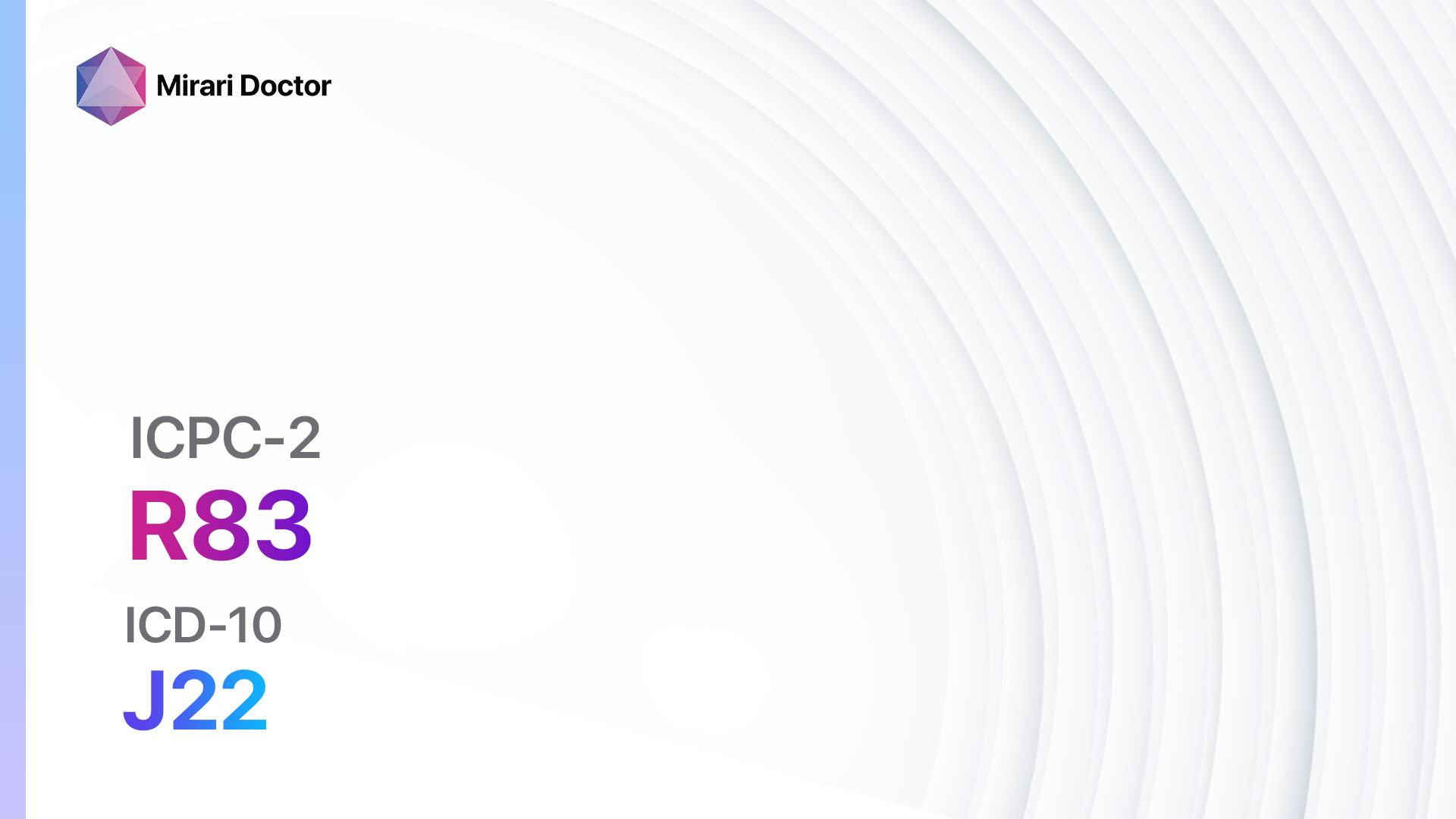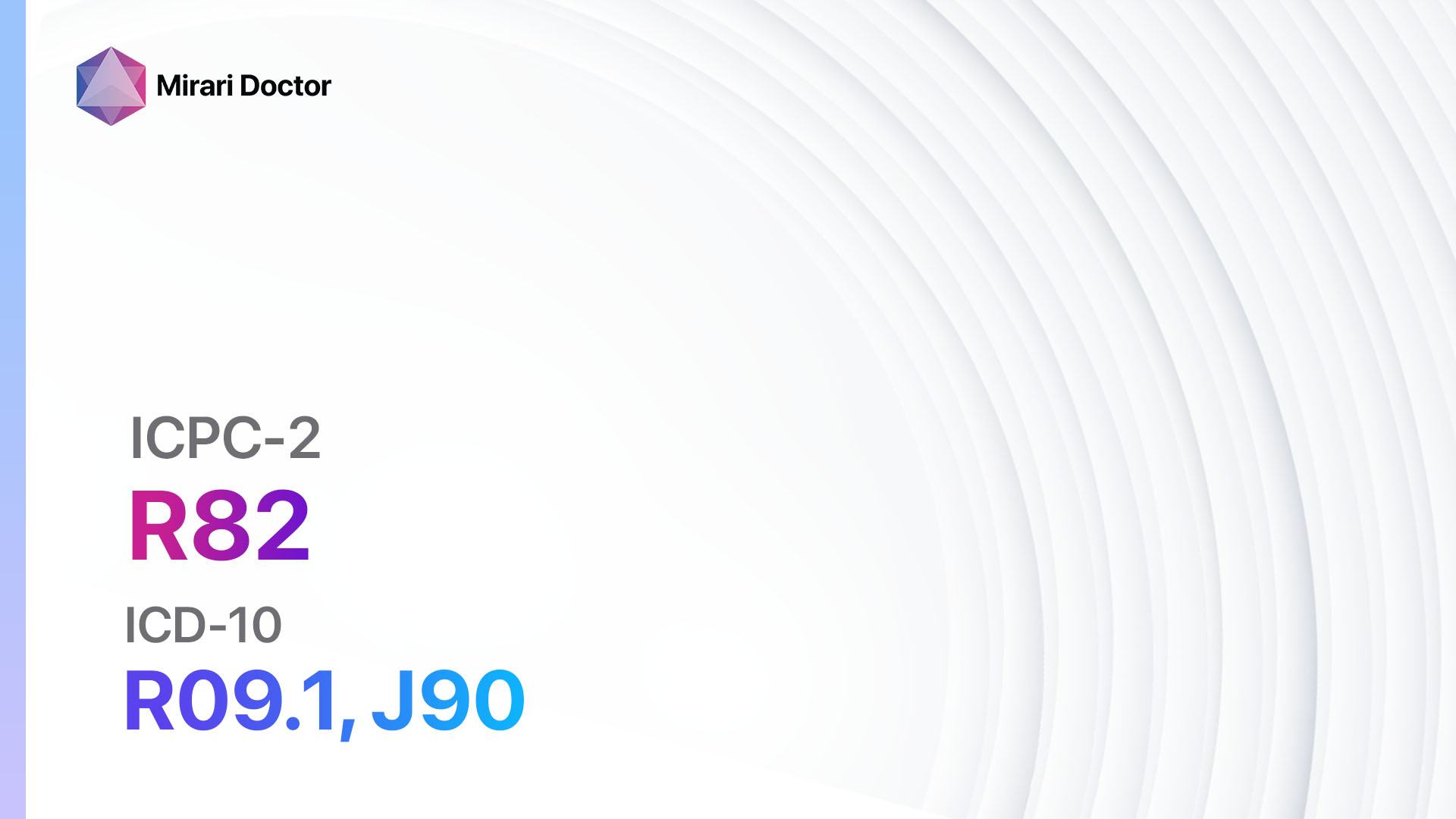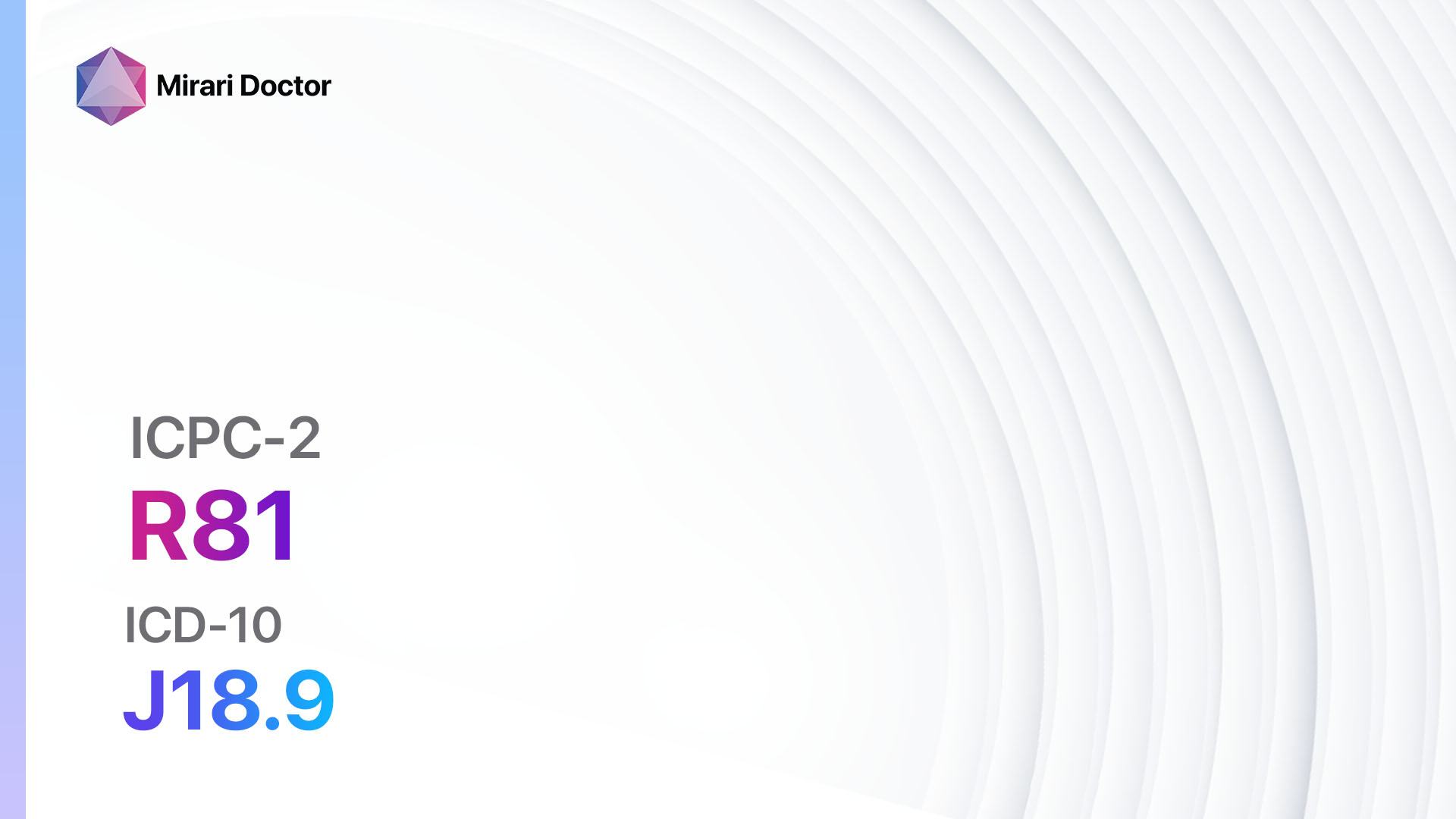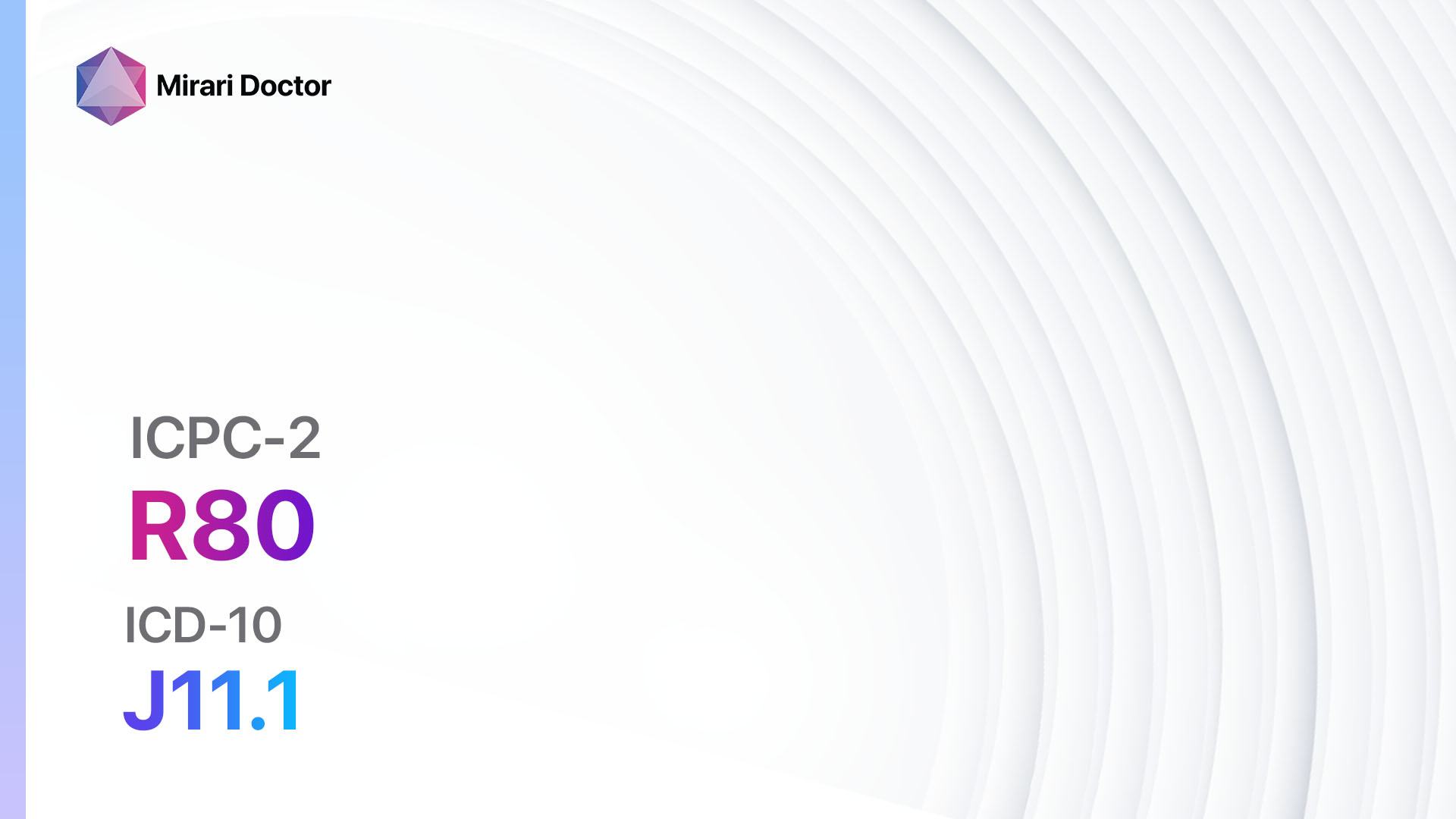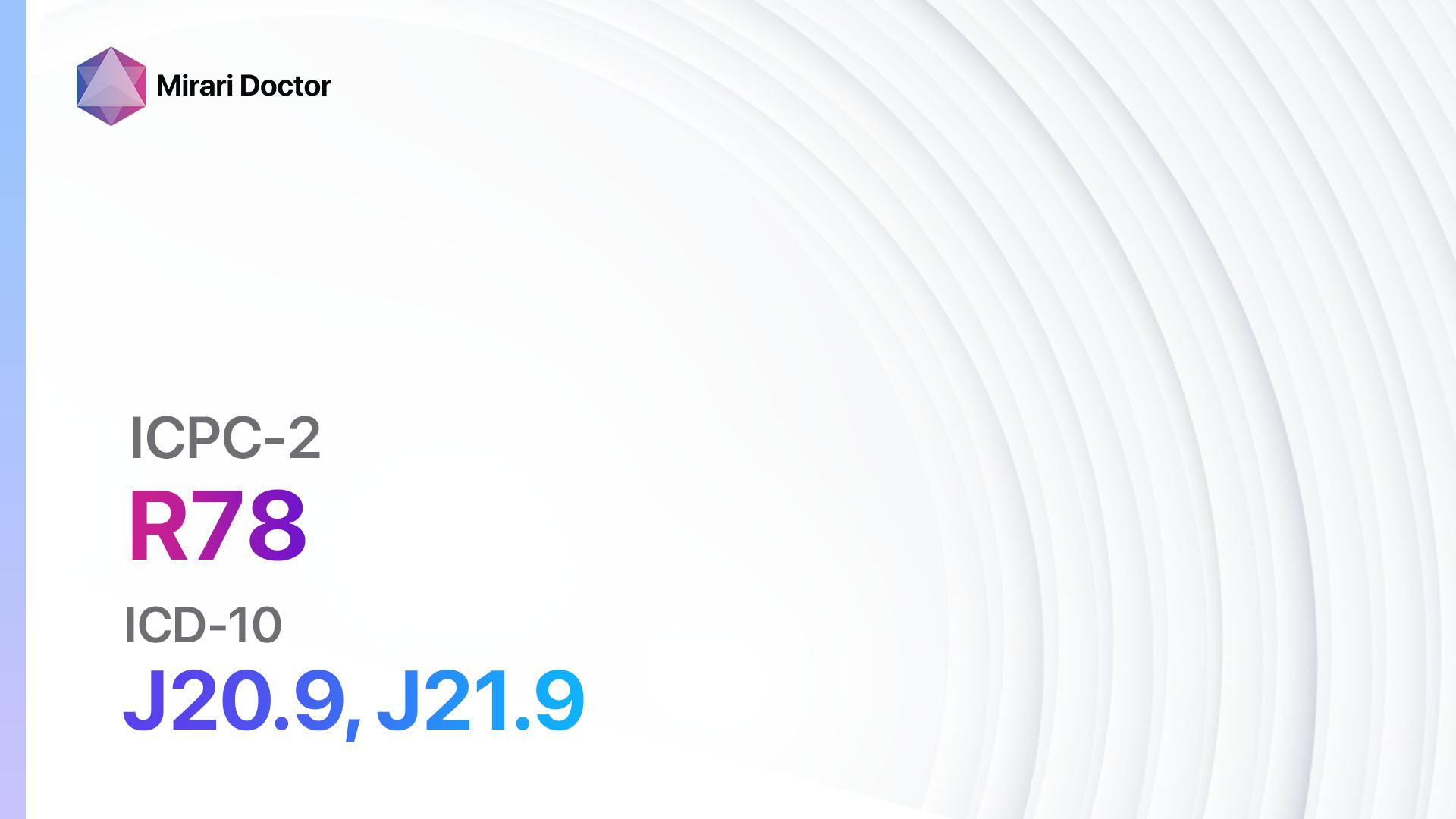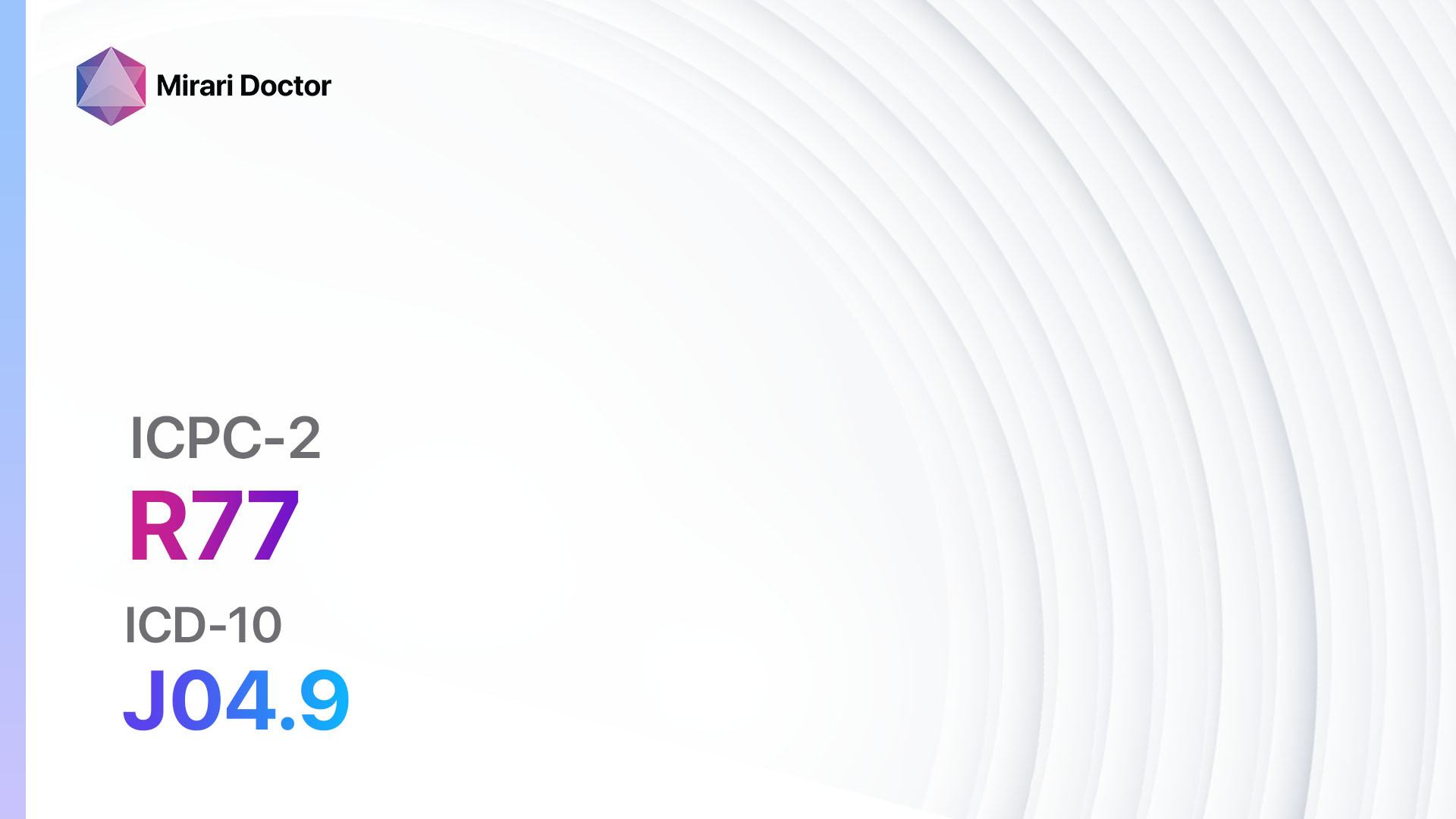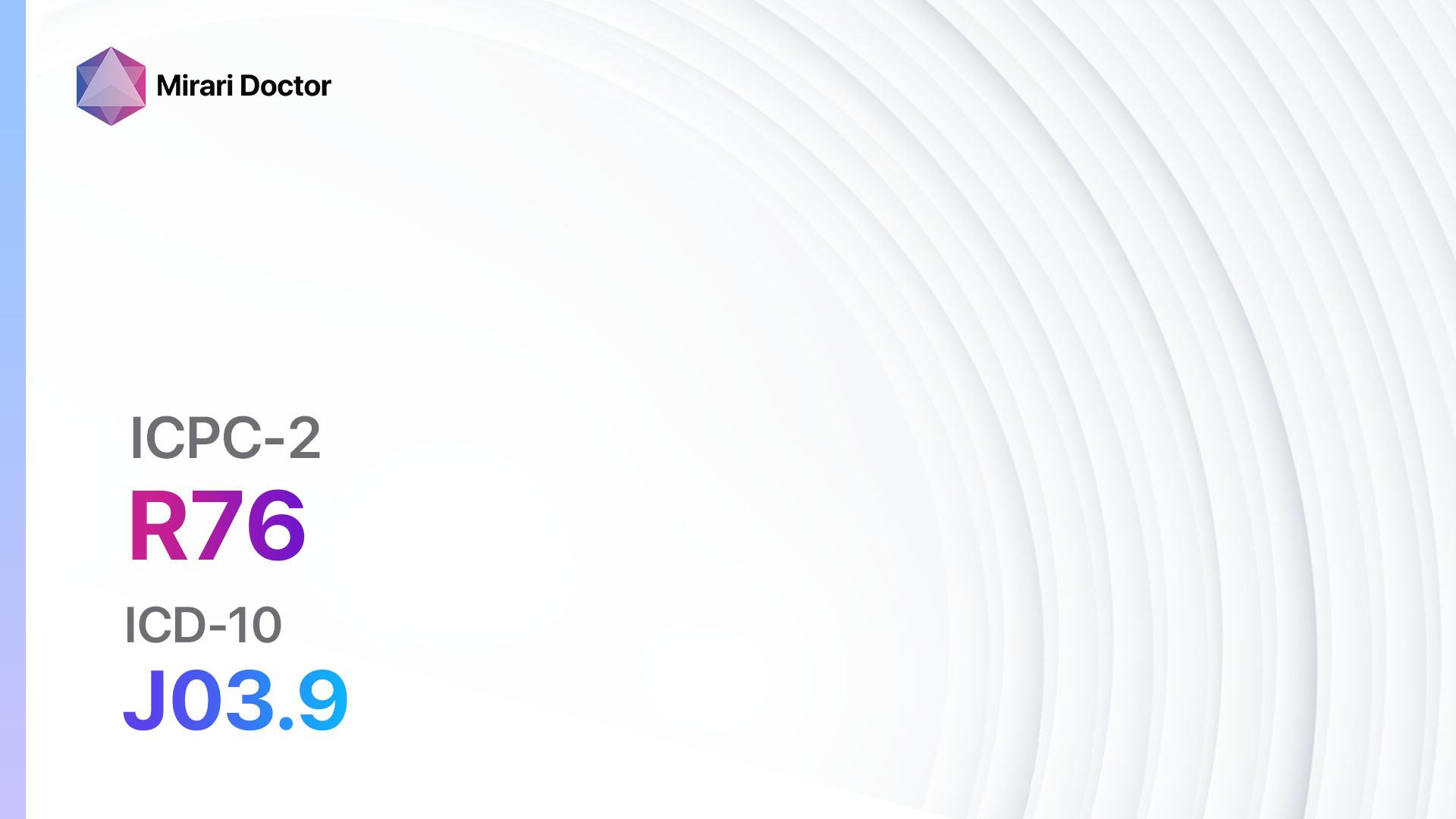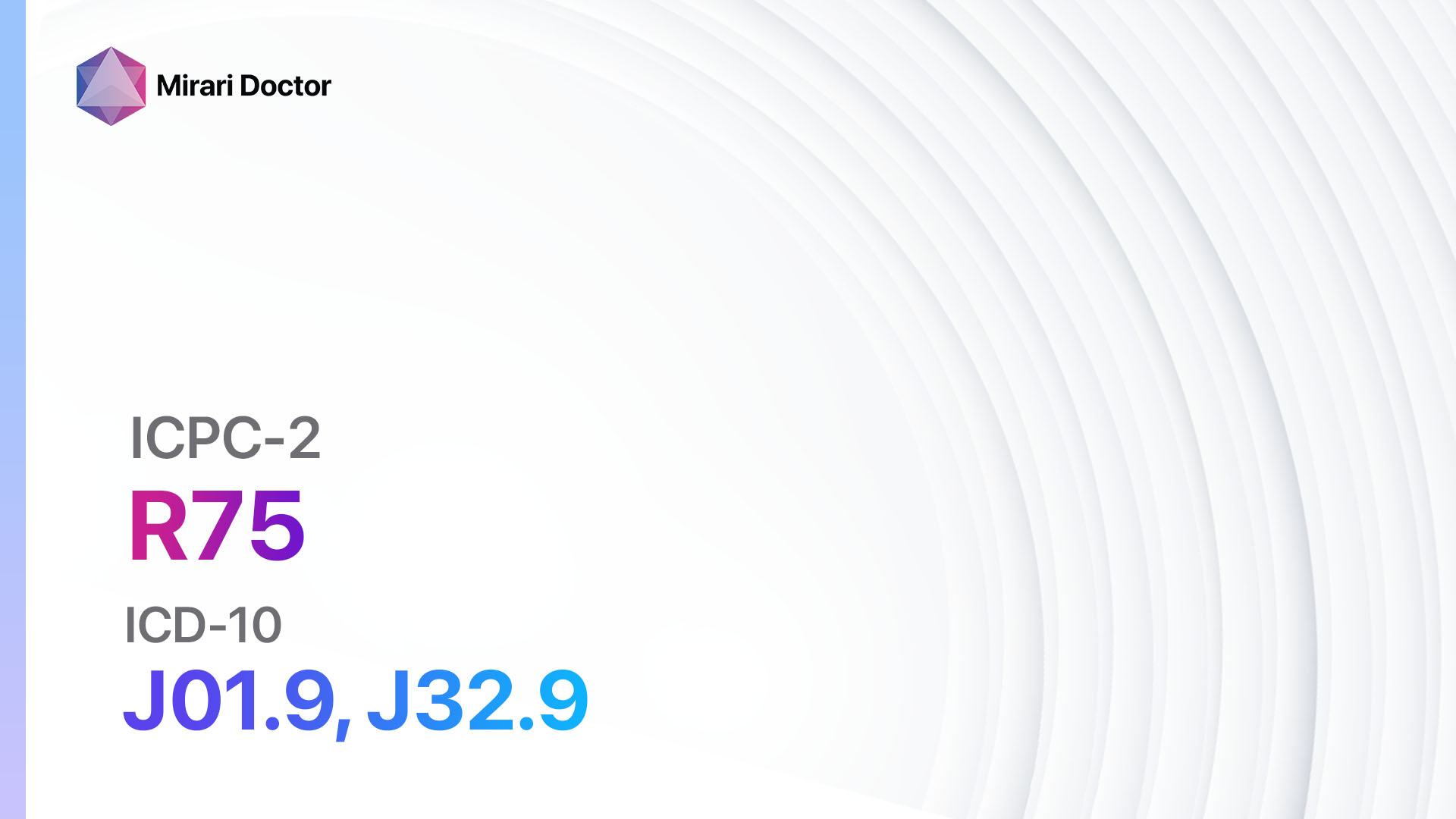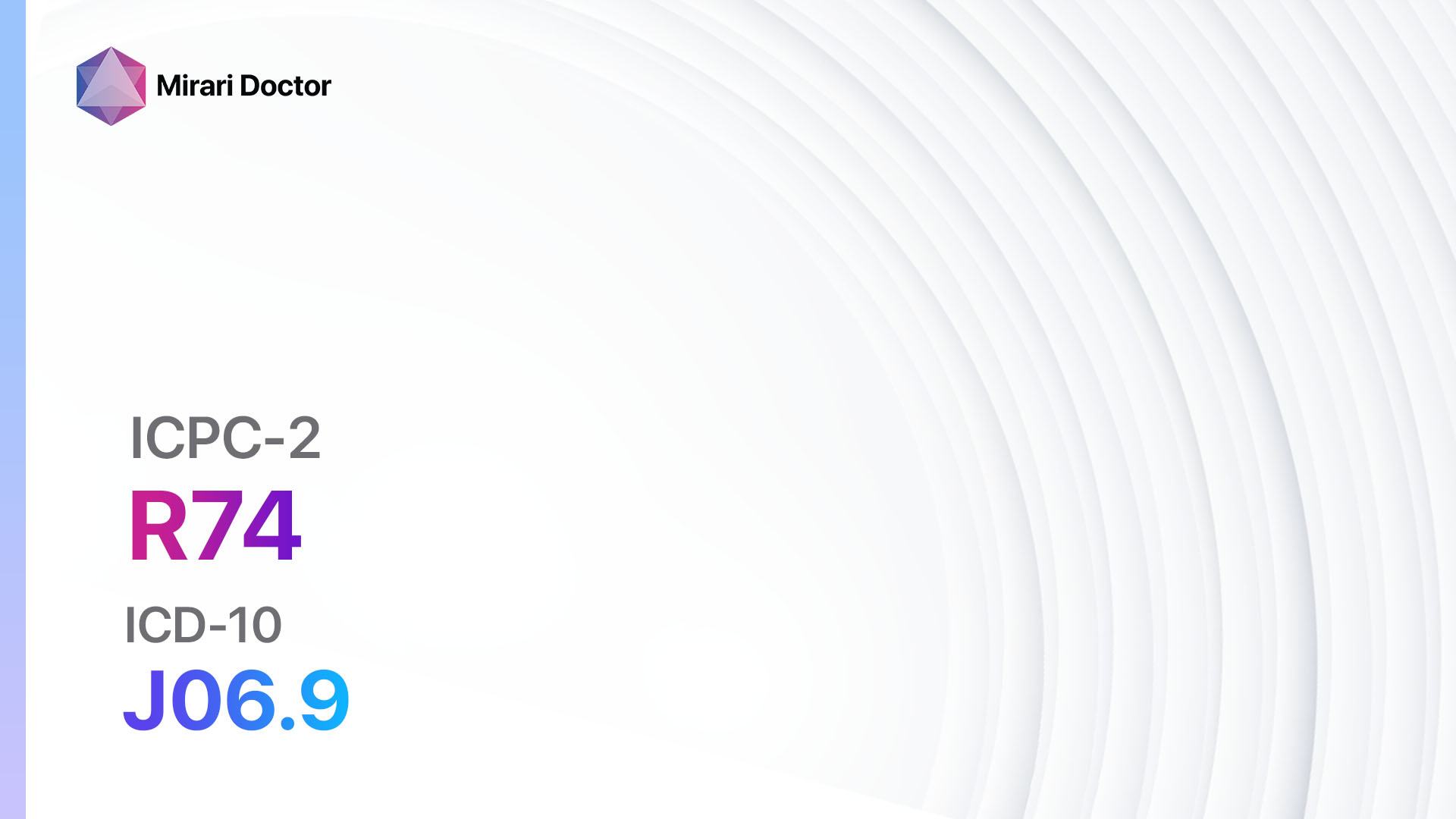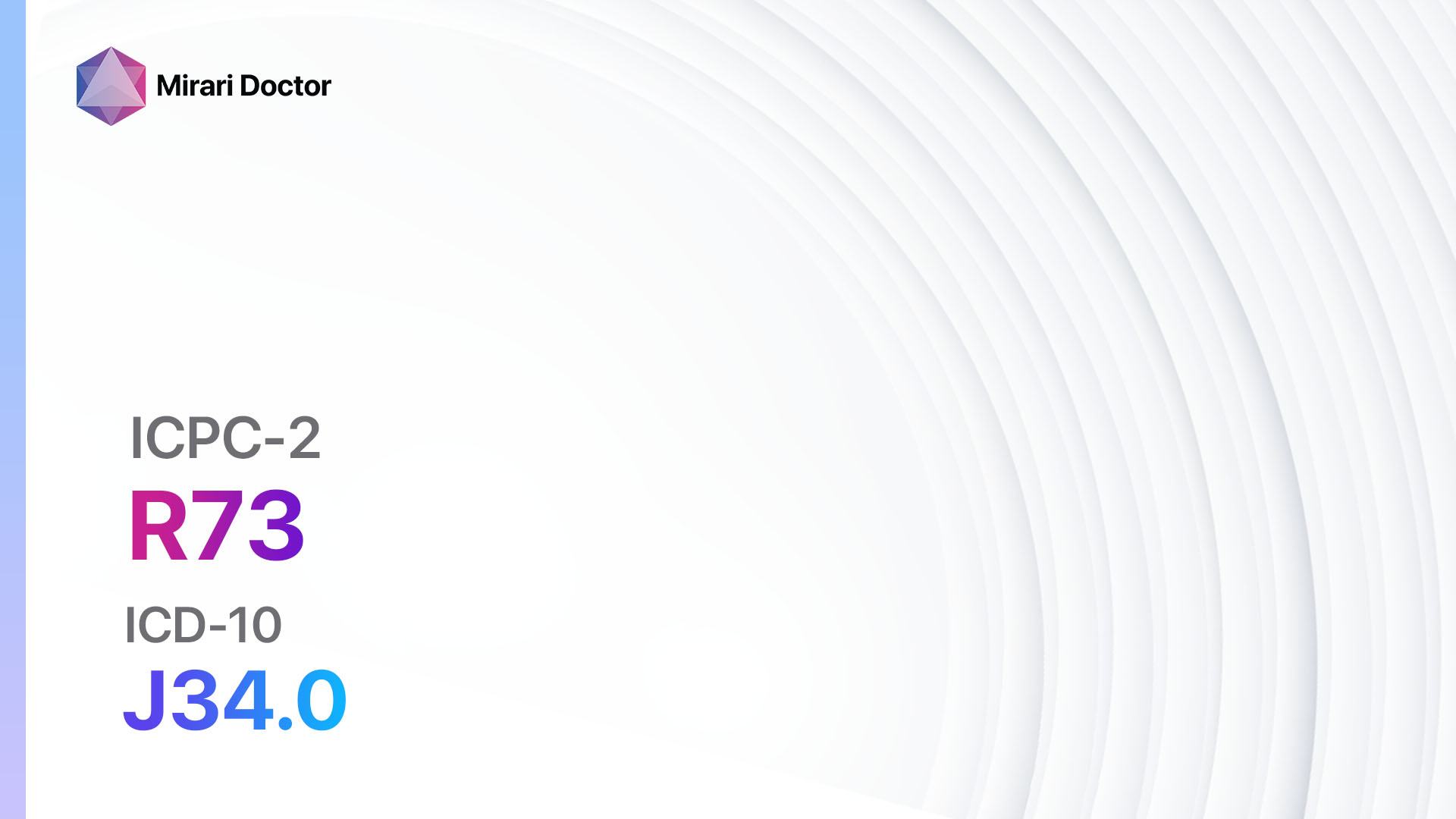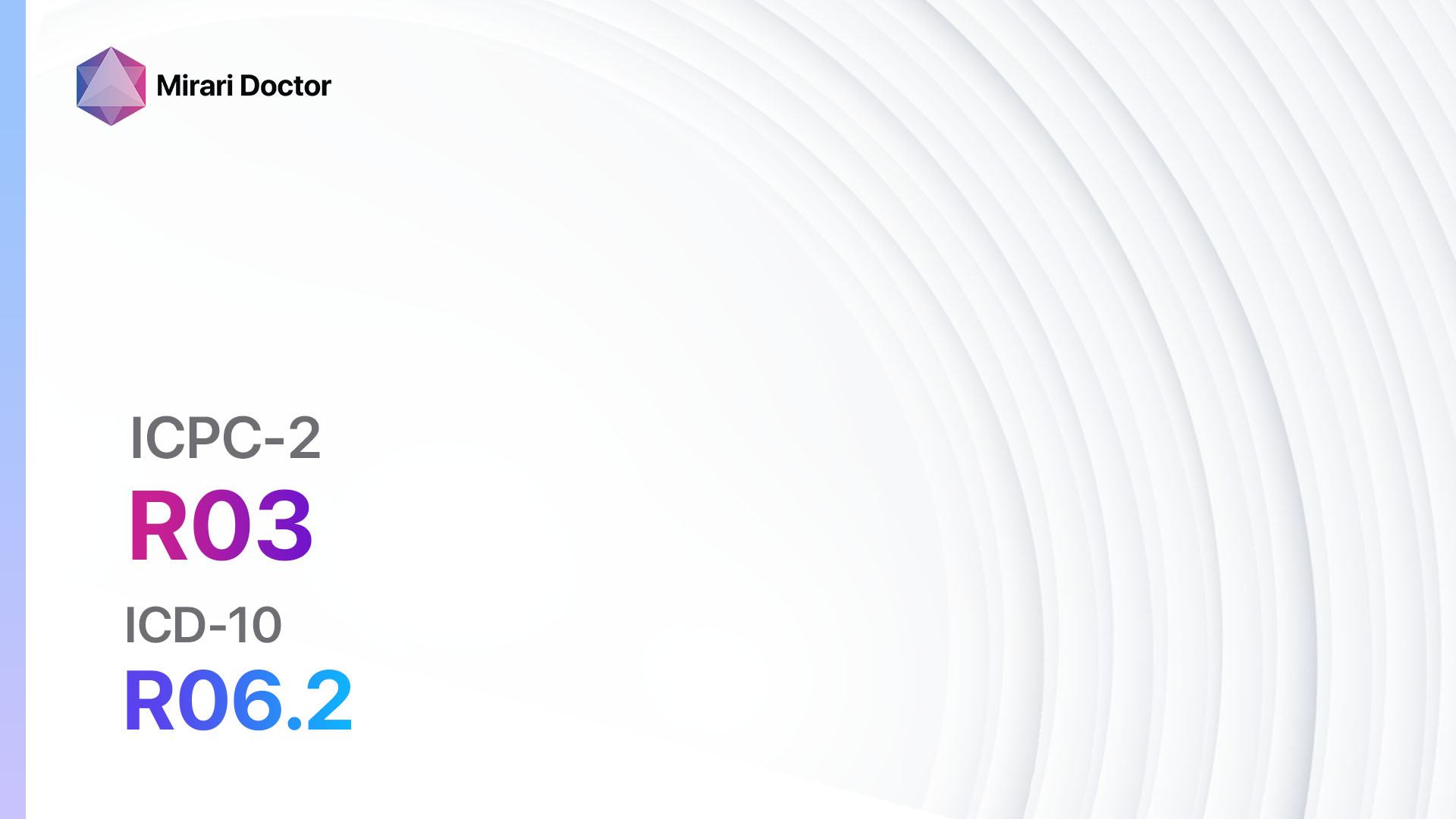
Introduction
Wheezing is a common symptom characterized by a high-pitched whistling sound during breathing. It is often associated with narrowed or constricted airways[1]. This guide aims to provide healthcare professionals with a comprehensive approach to diagnosing and managing wheezing in patients.
Codes
Symptoms
- Wheezing: A high-pitched whistling sound during breathing[4].
- Shortness of breath: Difficulty breathing or feeling breathless[5].
- Chest tightness: A sensation of pressure or constriction in the chest[6].
- Cough: A persistent cough, often worse at night or early morning[7].
- Rapid breathing: Increased respiratory rate[8].
- Fatigue: Feeling tired or exhausted due to difficulty breathing[9].
Causes
- Asthma: A chronic inflammatory disease of the airways[10].
- Chronic obstructive pulmonary disease (COPD): A group of lung diseases that cause airflow obstruction.
- Allergies: An immune response to allergens such as pollen, dust mites, or pet dander.
- Respiratory infections: Viral or bacterial infections that affect the respiratory system.
- Bronchitis: Inflammation of the bronchial tubes.
- Bronchiolitis: Inflammation of the small airways in the lungs, often seen in infants and young children.
- Gastroesophageal reflux disease (GERD): Acid reflux from the stomach into the esophagus and throat.
- Smoking: Inhalation of smoke from cigarettes or other tobacco products.
- Environmental factors: Exposure to irritants such as air pollution, chemicals, or strong odors.
Diagnostic Steps
Medical History
- Gather information about the patient’s symptoms, including the frequency, duration, and severity of wheezing episodes.
- Ask about any triggers or factors that worsen wheezing, such as exercise, allergens, or exposure to smoke.
- Inquire about the presence of other respiratory symptoms, such as cough, shortness of breath, or chest tightness.
- Assess the patient’s medical history, including any previous diagnoses of asthma, COPD, or allergies.
- Determine if the patient has a family history of respiratory conditions.
- Ask about the use of medications, including inhalers or oral corticosteroids.
Physical Examination
- Auscultate the lungs using a stethoscope to listen for wheezing sounds.
- Assess the patient’s respiratory rate and effort.
- Observe for signs of respiratory distress, such as increased use of accessory muscles or cyanosis.
- Check for any abnormalities in the chest, such as asymmetry or deformities.
- Evaluate the patient’s overall general appearance and level of consciousness.
Laboratory Tests
- Complete blood count (CBC): To assess for signs of infection or inflammation.
- Pulmonary function tests (PFTs): Measures lung function, including airflow, lung volumes, and gas exchange.
- Allergy testing: Skin prick tests or blood tests to identify specific allergens.
- Fractional exhaled nitric oxide (FeNO) test: Measures the level of nitric oxide in the breath, which can indicate airway inflammation.
- Blood gas analysis: Measures oxygen and carbon dioxide levels in the blood.
Diagnostic Imaging
- Chest X-ray: To evaluate the structure and condition of the lungs and surrounding tissues.
- Computed tomography (CT) scan: Provides detailed images of the lungs and can detect abnormalities not visible on a chest X-ray.
- Bronchoscopy: A procedure that allows direct visualization of the airways using a flexible tube with a camera.
Other Tests
- Methacholine challenge test: Measures airway responsiveness to identify asthma.
- Peak flow measurement: Measures the maximum flow of air during forced exhalation to assess lung function.
- Eosinophil count: Measures the number of eosinophils, a type of white blood cell associated with allergic inflammation.
Follow-up and Patient Education
- Schedule follow-up appointments to monitor the patient’s symptoms and response to treatment.
- Provide education on the management of wheezing, including proper inhaler technique and the importance of avoiding triggers.
- Discuss the importance of adherence to prescribed medications and the potential need for long-term treatment.
- Encourage the patient to seek medical attention if symptoms worsen or if new symptoms develop.
Possible Interventions
Traditional Interventions
Medications:
Top 5 drugs for Wheezing:
- Short-acting beta-agonists (e.g., Albuterol, Levalbuterol):
- Cost: Generic versions can be $10-$50 per inhaler.
- Contraindications: Hypersensitivity to the drug.
- Side effects: Tremor, increased heart rate.
- Severe side effects: Chest pain, arrhythmias.
- Drug interactions: Beta-blockers, monoamine oxidase inhibitors (MAOIs).
- Warning: Overuse can lead to decreased effectiveness.
- Inhaled corticosteroids (e.g., Fluticasone, Budesonide):
- Cost: Generic versions can be $30-$100 per inhaler.
- Contraindications: Hypersensitivity to the drug.
- Side effects: Thrush (oral candidiasis), hoarseness.
- Severe side effects: Adrenal suppression, osteoporosis.
- Drug interactions: None significant.
- Warning: Rinse mouth after use to reduce the risk of thrush.
- Long-acting beta-agonists (e.g., Salmeterol, Formoterol):
- Cost: Generic versions can be $50-$150 per inhaler.
- Contraindications: Hypersensitivity to the drug.
- Side effects: Tremor, increased heart rate.
- Severe side effects: Chest pain, arrhythmias.
- Drug interactions: Beta-blockers, MAOIs.
- Warning: Should always be used in combination with an inhaled corticosteroid.
- Anticholinergics (e.g., Ipratropium bromide, Tiotropium bromide):
- Cost: Generic versions can be $20-$100 per inhaler.
- Contraindications: Hypersensitivity to the drug, peanut or soy allergy (for ipratropium bromide).
- Side effects: Dry mouth, urinary retention.
- Severe side effects: Glaucoma, worsening of urinary retention.
- Drug interactions: None significant.
- Warning: Not recommended as monotherapy for asthma.
- Systemic corticosteroids (e.g., Prednisone, Methylprednisolone):
- Cost: Generic versions can be $10-$50 for a short course.
- Contraindications: Hypersensitivity to the drug, active infection.
- Side effects: Increased appetite, mood changes.
- Severe side effects: Adrenal suppression, osteoporosis.
- Drug interactions: None significant.
- Warning: Should be used for short-term treatment of acute exacerbations.
Alternative Drugs:
- Leukotriene modifiers (e.g., Montelukast): Oral medication that helps reduce inflammation and improve asthma control. Cost: $50-$100 per month.
- Mast cell stabilizers (e.g., Cromolyn sodium): Inhaled medication that helps prevent asthma attacks. Cost: $20-$50 per inhaler.
- Theophylline: Oral medication that helps relax the airway muscles. Cost: $10-$30 per month.
- Monoclonal antibodies (e.g., Omalizumab, Mepolizumab): Injectable medications for severe asthma that target specific immune pathways. Cost: $1,000-$5,000 per dose.
Surgical Procedures:
- Bronchial thermoplasty: A procedure that uses heat to reduce the smooth muscle in the airways. Cost: $10,000-$20,000.
- Lung volume reduction surgery: Removes damaged lung tissue to improve lung function. Cost: $30,000-$50,000.
Alternative Interventions
- Acupuncture: May help improve lung function and reduce wheezing. Cost: $60-$120 per session.
- Breathing exercises: Techniques such as pursed-lip breathing or diaphragmatic breathing can help improve breathing control. Cost: Free.
- Herbal remedies: Certain herbs, such as licorice root or ginger, may have bronchodilator properties. Cost: Varies depending on the specific herb.
- Homeopathy: Some homeopathic remedies, such as Natrum sulphuricum or Arsenicum album, may be used to treat wheezing. Cost: Varies depending on the specific remedy.
- Salt therapy: Inhaling salt particles may help reduce airway inflammation and improve breathing. Cost: $50-$100 per session.
Lifestyle Interventions
- Avoiding triggers: Identify and avoid allergens or irritants that can trigger wheezing episodes, such as pollen, dust mites, or smoke. Cost: Free.
- Maintaining a healthy weight: Losing weight can help reduce the strain on the respiratory system. Cost: Varies depending on the weight loss method.
- Quitting smoking: Smoking cessation can significantly improve lung function and reduce wheezing. Cost: Varies depending on the smoking cessation method.
- Regular exercise: Engaging in regular physical activity can improve lung function and overall respiratory health. Cost: Varies depending on the chosen exercise program.
- Managing stress: Stress can worsen wheezing symptoms, so stress management techniques such as meditation or yoga may be beneficial. Cost: Varies depending on the chosen stress management method.
It is important to note that the cost ranges provided are approximate and may vary depending on the location and availability of the interventions.
Mirari Cold Plasma Alternative Intervention
Understanding Mirari Cold Plasma
- Safe and Non-Invasive Treatment: Mirari Cold Plasma is a safe and non-invasive treatment option for various skin conditions. It does not require incisions, minimizing the risk of scarring, bleeding, or tissue damage.
- Efficient Extraction of Foreign Bodies: Mirari Cold Plasma facilitates the removal of foreign bodies from the skin by degrading and dissociating organic matter, allowing easier access and extraction.
- Pain Reduction and Comfort: Mirari Cold Plasma has a local analgesic effect, providing pain relief during the treatment, making it more comfortable for the patient.
- Reduced Risk of Infection: Mirari Cold Plasma has antimicrobial properties, effectively killing bacteria and reducing the risk of infection.
- Accelerated Healing and Minimal Scarring: Mirari Cold Plasma stimulates wound healing and tissue regeneration, reducing healing time and minimizing the formation of scars.
Mirari Cold Plasma Prescription
Video instructions for using Mirari Cold Plasma Device – R03 Wheezing (ICD-10:R06.2)
| Mild | Moderate | Severe |
| Mode setting: 1 (Infection) Location: 4 (Heart, Bile & Pancreas) Morning: 15 minutes, Evening: 15 minutes |
Mode setting: 1 (Infection) Location: 4 (Heart, Bile & Pancreas) Morning: 30 minutes, Lunch: 30 minutes, Evening: 30 minutes |
Mode setting: 1 (Infection) Location: 4 (Heart, Bile & Pancreas) Morning: 30 minutes, Lunch: 30 minutes, Evening: 30 minutes |
| Mode setting: 2 (Wound Healing) Location: 4 (Heart, Bile & Pancreas) Morning: 15 minutes, Evening: 15 minutes |
Mode setting: 2 (Wound Healing) Location: 4 (Heart, Bile & Pancreas) Morning: 30 minutes, Lunch: 30 minutes, Evening: 30 minutes |
Mode setting: 2 (Wound Healing) Location: 4 (Heart, Bile & Pancreas) Morning: 30 minutes, Lunch: 30 minutes, Evening: 30 minutes |
| Total Morning: 30 minutes approx. $5 USD, Evening: 30 minutes approx. $5 USD |
Total Morning: 60 minutes approx. $10 USD, Lunch: 60 minutes approx. $10 USD, Evening: 60 minutes approx. $10 USD, |
Total Morning: 60 minutes approx. $10 USD, Lunch: 60 minutes approx. $10 USD, Evening: 60 minutes approx. $10 USD, |
| Usual treatment for 7-60 days approx. $70 USD – $600 USD | Usual treatment for 6-8 weeks approx. $1,260 USD – $1,680 USD |
Usual treatment for 3-6 months approx. $2,700 USD – $5,400 USD
|
 |
|
Use the Mirari Cold Plasma device to treat Wheezing effectively.
WARNING: MIRARI COLD PLASMA IS DESIGNED FOR THE HUMAN BODY WITHOUT ANY ARTIFICIAL OR THIRD PARTY PRODUCTS. USE OF OTHER PRODUCTS IN COMBINATION WITH MIRARI COLD PLASMA MAY CAUSE UNPREDICTABLE EFFECTS, HARM OR INJURY. PLEASE CONSULT A MEDICAL PROFESSIONAL BEFORE COMBINING ANY OTHER PRODUCTS WITH USE OF MIRARI.
Step 1: Cleanse the Skin
- Start by cleaning the affected area of the skin with a gentle cleanser or mild soap and water. Gently pat the area dry with a clean towel.
Step 2: Prepare the Mirari Cold Plasma device
- Ensure that the Mirari Cold Plasma device is fully charged or has fresh batteries as per the manufacturer’s instructions. Make sure the device is clean and in good working condition.
- Switch on the Mirari device using the power button or by following the specific instructions provided with the device.
- Some Mirari devices may have adjustable settings for intensity or treatment duration. Follow the manufacturer’s instructions to select the appropriate settings based on your needs and the recommended guidelines.
Step 3: Apply the Device
- Place the Mirari device in direct contact with the affected area of the skin. Gently glide or hold the device over the skin surface, ensuring even coverage of the area experiencing.
- Slowly move the Mirari device in a circular motion or follow a specific pattern as indicated in the user manual. This helps ensure thorough treatment coverage.
Step 4: Monitor and Assess:
- Keep track of your progress and evaluate the effectiveness of the Mirari device in managing your Wheezing. If you have any concerns or notice any adverse reactions, consult with your health care professional.
Note
This guide is for informational purposes only and should not replace the advice of a medical professional. Always consult with your healthcare provider or a qualified medical professional for personal advice, diagnosis, or treatment. Do not solely rely on the information presented here for decisions about your health. Use of this information is at your own risk. The authors of this guide, nor any associated entities or platforms, are not responsible for any potential adverse effects or outcomes based on the content.
Mirari Cold Plasma System Disclaimer
- Purpose: The Mirari Cold Plasma System is a Class 2 medical device designed for use by trained healthcare professionals. It is registered for use in Thailand and Vietnam. It is not intended for use outside of these locations.
- Informational Use: The content and information provided with the device are for educational and informational purposes only. They are not a substitute for professional medical advice or care.
- Variable Outcomes: While the device is approved for specific uses, individual outcomes can differ. We do not assert or guarantee specific medical outcomes.
- Consultation: Prior to utilizing the device or making decisions based on its content, it is essential to consult with a Certified Mirari Tele-Therapist and your medical healthcare provider regarding specific protocols.
- Liability: By using this device, users are acknowledging and accepting all potential risks. Neither the manufacturer nor the distributor will be held accountable for any adverse reactions, injuries, or damages stemming from its use.
- Geographical Availability: This device has received approval for designated purposes by the Thai and Vietnam FDA. As of now, outside of Thailand and Vietnam, the Mirari Cold Plasma System is not available for purchase or use.
References
- Sarkar, M., Madabhavi, I., Niranjan, N., & Dogra, M. (2015). Auscultation of the respiratory system. Annals of thoracic medicine, 10(3), 158.
- World Health Organization. (2016). International Classification of Primary Care, Second edition (ICPC-2).
- World Health Organization. (2019). International Statistical Classification of Diseases and Related Health Problems (11th ed.).
- Banzett, R. B., & Moosavi, S. H. (2017). Dyspnea and pain: similarities and contrasts between two very unpleasant sensations. American Pain Society, 16(6), 491-497.
- Parshall, M. B., Schwartzstein, R. M., Adams, L., Banzett, R. B., Manning, H. L., Bourbeau, J., … & O’Donnell, D. E. (2012). An official American Thoracic Society statement: update on the mechanisms, assessment, and management of dyspnea. American journal of respiratory and critical care medicine, 185(4), 435-452.
- Wahls, S. A. (2012). Causes and evaluation of chronic dyspnea. American family physician, 86(2), 173-182.
- Irwin, R. S., French, C. L., Chang, A. B., Altman, K. W., & CHEST Expert Cough Panel*. (2018). Classification of cough as a symptom in adults and management algorithms: CHEST guideline and expert panel report. Chest, 153(1), 196-209.
- Grønseth, R., Vollmer, W. M., Hardie, J. A., Ólafsdóttir, I. S., Lamprecht, B., Buist, A. S., … & BOLD Collaborative Research Group. (2014). Predictors of dyspnoea prevalence: results from the BOLD study. European Respiratory Journal, 43(6), 1610-1620.
- Grønseth, R., Vollmer, W. M., Hardie, J. A., Ólafsdóttir, I. S., Lamprecht, B., Buist, A. S., … & BOLD Collaborative Research Group. (2014). Predictors of dyspnoea prevalence: results from the BOLD study. European Respiratory Journal, 43(6), 1610-1620.
- Parshall, M. B., Schwartzstein, R. M., Adams, L., Banzett, R. B., Manning, H. L., Bourbeau, J., … & O’Donnell, D. E. (2012). An official American Thoracic Society statement: update on the mechanisms, assessment, and management of dyspnea. American journal of respiratory and critical care medicine, 185(4), 435-452.
Related articles
Made in USA


